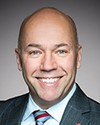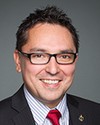I think they're learning a bit of the basics as to what those treaties mean. Again, a lot has to do with the respect of our culture. In the Treaty No. 3 area especially, we're very sacred and very spiritual, and it's tough to give full teachings on the treaty because, to us, the treaty is of a spiritual nature and you only talk about what you know.
What I think needs to happen, and I always make this comment, is that the Canadian public school systems will have to teach the Canadian public youth what it means to be in a treaty relationship, because each and every one of us in this room is a treaty person. We're all treaty people, because we all live in a treaty area or on treaty land, unless you live in an unceded territory. However, young people still need to learn about the treaties. They never learned about them.
In fact, actually, I faced a lot of racism in Beaver Brae and in middle school. I was bullied a lot just for being an aboriginal person and in very brutal, violent ways. In fact, when I was in grade 8, even a teacher told me I wouldn't make it to university because I was aboriginal. When I was in grade 10, a teacher told me I didn't belong to that academic class because I was aboriginal.
It's different now, but we have to capitalize on what seems to be this more accepting nature of our schools, to start encouraging that incorporation into all aspects of education. Even in something as simple as a geography course, you can start mapping out where Treaty No. 3 is, where we live, part of that land, and maybe where Treaty No. 3 was signed, and how important that is. Even those classes that might not seem important to treaty dialogue can be if it's incorporated properly.



